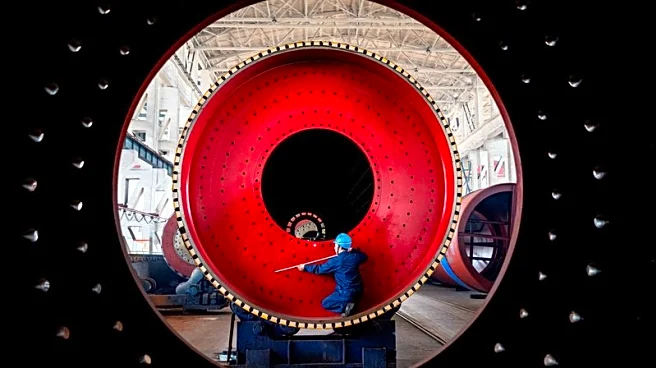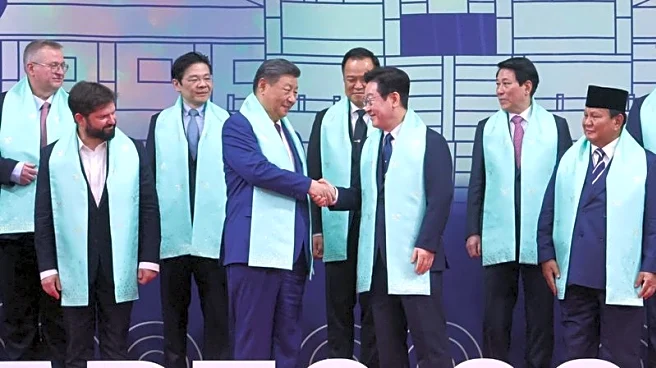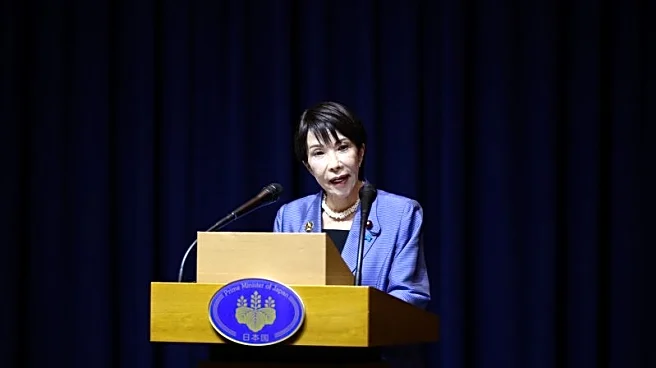What's Happening?
President Trump announced a new soybean deal with China following discussions with Chinese President Xi Jinping. The agreement comes after a significant reduction in Chinese purchases of U.S. soybeans,
which had nearly halted due to retaliatory tariffs imposed by China in response to U.S. tariffs on Chinese goods. Under the new deal, China has pledged to purchase 12 million metric tons of soybeans through January, with an annual commitment of 25 million tons starting next year. This development is seen as a relief for U.S. farmers amid the current export cycle. However, analysts caution that the deal merely resets trade volumes to pre-tariff levels and emphasize the need for U.S. producers to diversify their markets to mitigate future trade disputes.
Why It's Important?
China is the largest importer of soybeans globally and has historically been the top buyer of U.S. soybeans, accounting for about half of American exports. The trade war highlighted the U.S. soybean industry's heavy reliance on China, which gives China significant leverage. The new deal aims to stabilize this critical agricultural export sector, but the U.S. must explore new markets to reduce dependency on China. The agreement also includes trade and tariff concessions, with President Trump delaying a 100 percent tariff on Chinese goods and reducing duties on certain chemicals, while China postpones export restrictions on rare earth elements. This deal is crucial for U.S. farmers but underscores the need for strategic diversification.
What's Next?
The success of U.S. exporters in expanding their global market share remains uncertain. Meanwhile, Japan has signed a deal to increase its purchases of American agricultural goods, including soybeans, which could provide an alternative market for U.S. producers. The U.S. soybean industry must continue to seek new markets to reduce vulnerability to Chinese economic policies. The broader implications of the trade deal will depend on the ability of U.S. producers to adapt and the stability of U.S.-China relations.
Beyond the Headlines
The deal reflects ongoing geopolitical tensions and the strategic economic maneuvers between the U.S. and China. It highlights the complexities of international trade and the potential for economic statecraft to influence global markets. The reliance on a single market poses risks, and the U.S. must balance immediate economic relief with long-term strategic planning to ensure the resilience of its agricultural sector.













